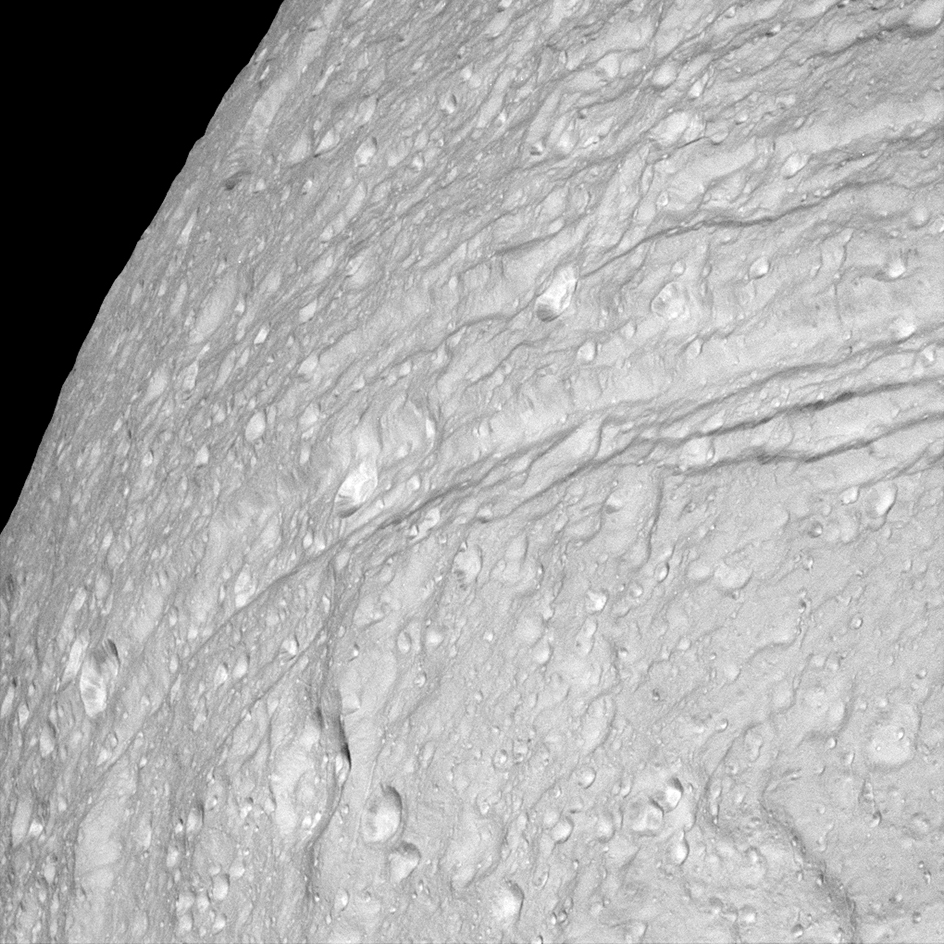Tethys, << TEE thihs, >> the fifth largest moon of Saturn, features a giant impact crater and a large trench that nearly encircles the satellite. Tethys’s surface also contains many smaller craters, regions of grooved terrain, and flat plains that appear to have been smoothed by ice flows. The moon consists almost entirely of water ice and may once have had a liquid water interior. Tethys’s diameter measures roughly 660 miles (1,060 kilometers). The moon orbits Saturn every 1.89 days at an average distance of about 183,100 miles (294,700 kilometers).

A prominent impact crater named Odysseus covers a large area of Tethys’s surface. The crater measures about 280 miles (450 kilometers) in diameter. Over time, Tethys’s gravitational pull has smoothed the crater’s walls and flattened its central peak.
A vast trench called Ithaca Chasma stretches more than 1,200 miles (2,000 kilometers) across Tethys’s surface. The trench measures 2 to 3 miles (3 to 5 kilometers) in depth and up to 60 miles (100 kilometers) in width. Some scientists think that Ithaca Chasma formed as Tethys’s liquid interior froze. Water expands as it freezes, which could have caused Tethys’s solid crust to stretch and crack. Other scientists think that the trench formed as a result of the impact that created Odysseus.
Tethys shares its orbit around Saturn with two smaller moons: (1) Telesto and (2) Calypso. Telesto orbits ahead of Tethys, while Calypso orbits behind it. As they orbit Saturn, the smaller moons remain equally distant from Tethys. The combined gravitational pulls of Tethys and Saturn keep Telesto and Calypso from drifting away from these special positions, known as Lagrange points.
The Italian-born French astronomer Giovanni Domenico Cassini discovered Tethys using a telescope in 1684. In the early 1980’s, the United States space probes Voyager 1 and Voyager 2 flew by Tethys. The U.S. Cassini spacecraft first photographed Tethys in 2004 and then visited it during flybys in 2005 and 2007. Images from both the Voyagers and Cassini showed Tethys’s cratered surface as well as Odysseus and Ithaca Chasma.
